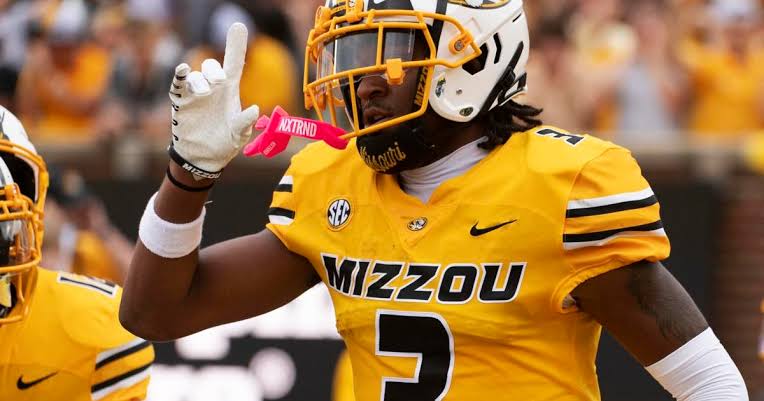How NFL-bound Luther Burden III ushered in the Missouri Tigers’ new era of NIL
Columbia
Inside the Mizzou South End Zone Facility, bags of chips sit on a table during recruiting visits. Printed on the front of each is a picture of wide receiver Luther Burden III, arms flexed, jaw set and a football clutched in his gloved hands.
The gold bag contrasts with his white No. 3 jersey, a red honey BBQ flavor tag and the bold lettering of “Red Hot Riplets.”
Burden’s name crowns the top, his signature also printed across his chest. The image, in addition to selling a snack, is a symbol of how Burden, one of college football’s top recruits in 2022, became the face of Missouri’s NIL movement.
That fall, the St. Louis product became one of the first college athletes in the country to launch a branded snack product. The chips, created in partnership with Old Vienna and distributed by Schnucks, debuted just as NIL legislation began reshaping the college sports economy.
Today, Mizzou sets those chips out for top recruits as proof that this is a place they can build a brand from the moment they arrive.
Now, Burden is preparing for his next leap. After three years with the Tigers, the wideout is projected to be a first- or second-round pick in the 2025 NFL Draft. As he moves on from college football, his impact in his home state and Mizzou’s broader NIL landscape continues to shape how the Tigers can recruit and retain student-athletes.
A LOCAL COMMITMENT, A STATEWIDE SHIFT
In a St. Louis gym in October 2021, Burden stood behind a table lined with three hats: Missouri, Georgia and Alabama. He picked up the Georgia and Alabama caps, studying both of them, then cracked a smile as he tossed them to the floor.
Only the Mizzou hat remained.
“Big recruits in St. Louis, they all go places like the Georgias, the Alabamas,” he said after he fastened the Mizzou cap on his head. “I just want to start a chain here in St. Louis for the younger people with talent under me.”
At the time, Burden was the top-ranked wide receiver in the country and one of the most sought-after recruits in recent Mizzou football history. His decision to stay close to home came at a pivotal moment for both the program and college athletics as a whole.
